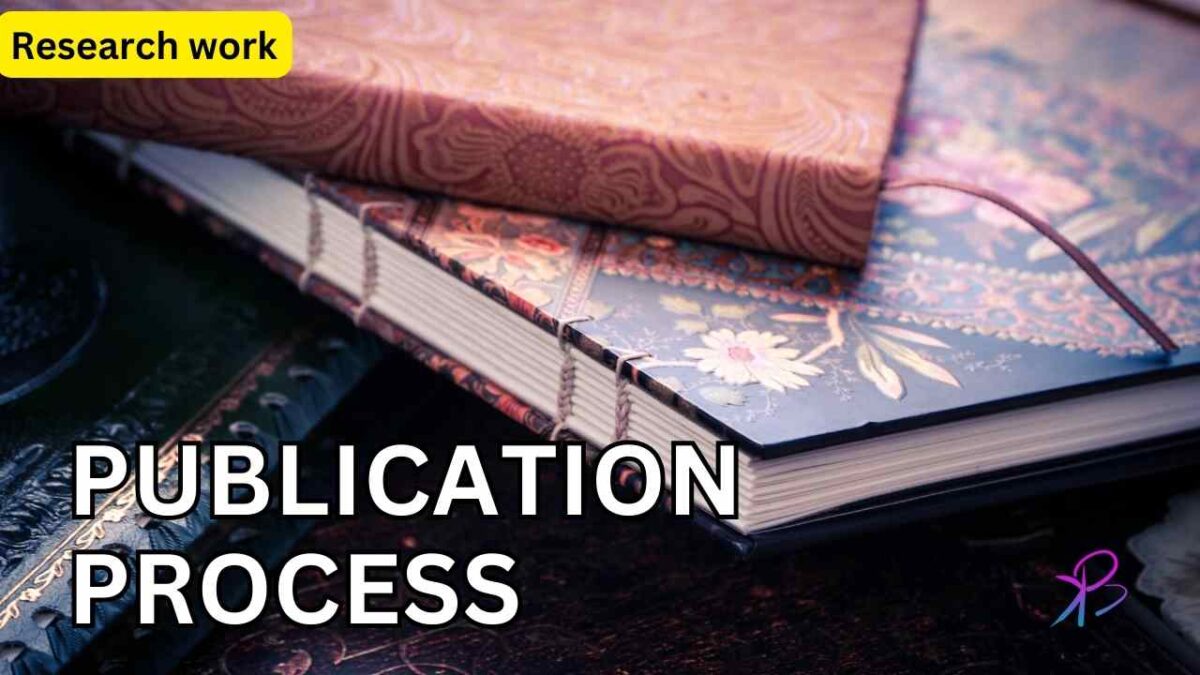Introduction
Publication Process : publishing your research can feel like setting sail into uncharted waters. The thrill of discovery is often matched by the complexity of getting your findings published. This guide is your compass, designed to navigate the vast seas of academic publishing, ensuring that the knowledge you've worked so hard to uncover finds its way to the right audience and makes the impact it deserves.

1. Understanding the Publication Landscape
1.1 Overview of the Academic Publishing World
Academic publishing serves as the backbone of the scientific community, offering a platform for researchers to share their findings, critique work, and build upon the knowledge base of their field. Journals range from open access, making research freely available to all, to subscription-based models, where access is restricted to paying subscribers or institutions. Grasping these distinctions is crucial for determining where your research can make the most impact.

1.2 Choosing the Right Journal for Your Research
The right journal acts as a beacon, drawing the intended audience to your research. It's not just about the impact factor—a measure of the journal's influence based on citation rates—but also about the journal’s scope, audience, and compatibility with your research themes. This section delves into strategies for journal selection, ensuring your work is positioned for maximum visibility and impact. For example, your research could be great, but may not be suitable for a journal.

1.3 Deciphering Journal Requirements
Each journal has its own set of submission guidelines, covering manuscript format, ethical considerations, and submission processes. Navigating these requirements is akin to deciphering a complex code—one that, when understood, smooths the path to publication. We'll explore how to master this step, highlighting common pitfalls and tips for compliance.
2. Crafting Your Manuscript
2.1 Structuring Your Manuscript Effectively

The structure of your manuscript is your story’s skeleton, supporting and shaping the presentation of your research. Employing the IMRAD format (Introduction, Methods, Results, and Discussion) ensures your manuscript meets the scientific community's expectations. This part of the guide offers insights into creating a compelling narrative through each section of your paper.
2.2 Writing with Clarity and Precision
The clarity of your writing determines whether your research is accessible and engaging. This segment emphasizes the importance of clear, jargon-free language, the iterative process of revisions, and the value of peer feedback in refining your manuscript to meet the highest standards of academic writing.
2.3 Navigating the Peer Review Process
Peer review is the gateway through which all scholarly works must pass. It’s a critical evaluation by experts in your field, offering an opportunity to refine and strengthen your research. We'll cover how to interpret feedback, respond constructively to criticism, and revise your manuscript to address reviewers' concerns effectively.
3. Maximizing Your Research Impact
3.1 The Role of Open Access Publishing

Open access publishing has transformed how research is disseminated, allowing unrestricted access to scientific discoveries. This section explores the benefits of open access for enhancing your research's visibility and impact, alongside navigating considerations such as publication fees and funding options.
3.2 Promoting Your Published Work
The publication of your research is not the final step; it’s the beginning of its journey into the wider world. Effective promotion strategies, from social media to academic networking platforms, can amplify your research's reach and impact. You can use various platforms for sharing your work to targeted audience.
4. Dealing with Rejection and Resubmission
4.1 Understanding Rejection
Rejection is a rite of passage in the academic world, often serving as a catalyst for growth and improvement. You have to understand the fact that, rejection does not mean week research work by any means, research work can get rejected for various reasons, such a grammar, communication, formatting, lack of data and support, novelty etc.
4.2 Strategies for Resubmission
Transforming rejection into an opportunity is key to academic success. Selecting an alternative journal, and navigating the resubmission process to turn a setback into a stepping stone towards publication.
5. Conclusion
The journey from research to publication is fraught with challenges but also rich with opportunities for growth, learning, and contribution to the global body of knowledge. Armed with the right strategies, insights, and a resilient spirit, you can navigate the publication process successfully. Remember, each published piece of research is a beacon of knowledge, illuminating the path for future explorers in the vast ocean of scientific inquiry.
Need Help in academic WRITING? contact us
FAQs
- How do I choose the best journal for my research? Consider the journal’s scope, audience, impact factor, and compatibility with your research themes.
- What is the significance of the impact factor?
The impact factor measures the average number of citations to articles published in a journal, serving as an indicator of its influence and the visibility of its articles. - How can I deal with rejection from a journal?
View rejection as an opportunity for growth. Analyze the feedback, improve your manuscript, and explore alternative journals for submission.
For help in modelling in any FEA, FDTD, DFT Simulation / Modelling work, you can contact us (bkcademy.in@gmail.com) or in any platform.
Interested to Learn Engineering modelling? Check our Courses?
check out our YouTube channel
u can follow me on social media 🙂 👇
-.-.-.-.-.-.-.-.-.().-.-.-.-.-.-.-.-.-
© bkacademy
